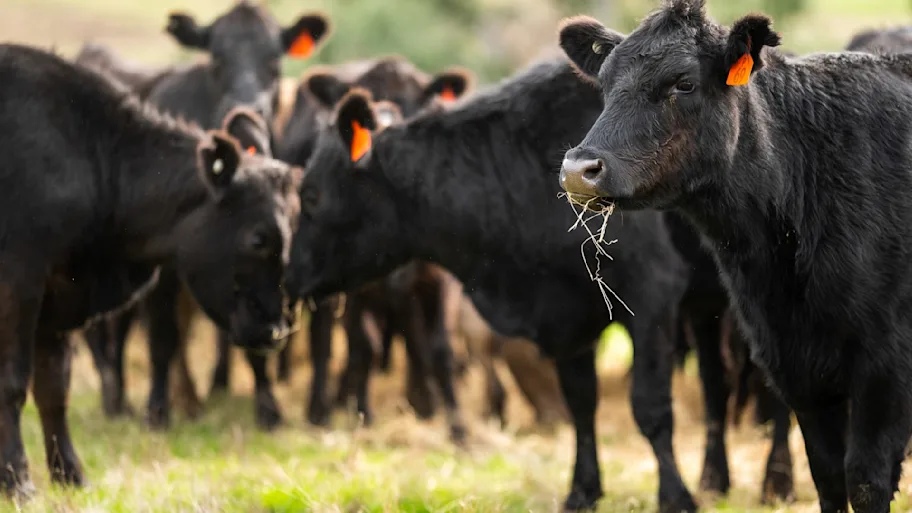
- Science news
- Climate action
- Climate-friendly labriculture depends on an energy revolution
Climate-friendly labriculture depends on an energy revolution

It is not yet clear how cultured meat would be produced at scale. Image: Shutterstock.
Comparison of the greenhouse gases produced by lab-grown and farm-raised beef in the current energy system suggests that the benefits of reducing methane could be outweighed by increased CO2
Currently proposed types of lab-grown meat cannot provide a cure-all for the detrimental climate impacts of meat production without a large-scale transition to a decarbonized energy system, a new study has found.
The study, from the LEAP (Livestock, Environment and People) program at the Oxford Martin School, found that some projections for the uptake of particular forms of cultured meat could indeed be better for the climate, but others could actually lead to higher global temperatures in the long run. Published in Frontiers in Sustainable Food Systems, their findings highlight that the climate impact of cultured meat production will depend on its energy demands and the availability of low-carbon energy sources.
“There has been a great deal of public interest in cultured meat recently, and many articles highlight the potential for substituting cattle beef with cultured meat to provide an important climate benefit,” explains lead author Dr John Lynch.
“We show that it is not yet clear whether this is the case, partly because of uncertainties about how cultured meat would be produced at scale. An important issue in comparing farmed and cultured beef is that the different warming impacts of greenhouse gases are also not well accounted for in the standard measure used in carbon footprints.”
Climate Impacts of Cultured Meat and Beef Cattle► Read original article► Download original article (pdf)
The Culture Club: is it a miracle?
Agricultural greenhouse gas emissions are responsible for around a quarter of current global warming. Replacing conventional cattle farming with ‘labriculture’ – meat grown in the lab using cell culture techniques – has been widely discussed as a way of reducing this environmental impact. But these estimates are based on carbon-dioxide equivalent footprints, which can be misleading because not all greenhouse gases generate the same amount of warming or have the same lifespan.
“Cattle are very emissions-intensive because they produce a large amount of methane from fermentation in their gut,” advises study co-author Raymond Pierrehumbert, Halley Professor of Physics at the University of Oxford.
“Methane is an important greenhouse gas, but the way in which we generally describe methane emissions as ‘carbon dioxide equivalent’ amounts can be misleading because the two gases are very different. Per tonne emitted, methane has a much larger warming impact than carbon dioxide, however, it only remains in the atmosphere for about 12 years whereas carbon dioxide persists and accumulates for millennia. This means methane’s impact on long-term warming is not cumulative and is impacted greatly if emissions increase or decrease over time.”
Sustainable labriculture depends on clean energy and new tech
To provide a rigorous comparison of the potential climate impacts of lab-grown meat and beef cattle, the researchers examined available data on the emissions associated with three current cattle farming methods and four possible meat culture methods, assuming current energy systems remained unchanged.
Using this data, they modeled the potential temperature impact of each production method over the next 1000 years. Their model showed that while cattle initially have a greater warming effect through the release of methane, in some cases the manufacture of lab-grown meat can ultimately result in more warming. This is due to the fact that even if consumption of meat were entirely phased out the warming from carbon dioxide would persist, whereas warming caused by methane ceases after only a few decades.
“This is important because while reducing methane emissions would be good – and an important part of our climate policies – if we simply replace that methane with carbon dioxide it could actually have detrimental long-term consequences,” warns Lynch.
Related: Taste is key in promoting insect-based food
Beef production is currently a major source of greenhouse gases: reducing consumption and improving production methods to reduce emissions can both help address this. The environmental benefits of lab-grown meat are a powerful imperative to continue and expand labriculture research, and especially to develop ways of producing cultured meat as efficiently as possible. The study also highlights that both cultured meat and cattle farming have complex inputs and impacts that need to be considered in fully appreciating their effect on the environment. For example, creating more grazing land for cattle often results in significant deforestation that could greatly increase the CO2 footprint of cattle systems (but can prove difficult to standardize in emissions footprints), while producing food in urban laboratories could free up land for storing CO2 (known as carbon sequestration) or other purposes.
Lynch concludes, “The climate impacts of cultured meat production will depend on what level of sustainable energy generation can be achieved, as well as the efficiency of future culture processes.”
Original article: Climate Impacts of Cultured Meat and Beef Cattle
REPUBLISHING GUIDELINES: Open access and sharing research is part of Frontiers’ mission. Unless otherwise noted, you can republish articles posted in the Frontiers news blog — as long as you include a link back to the original research. Selling the articles is not allowed.






